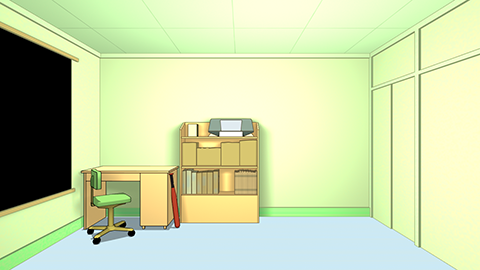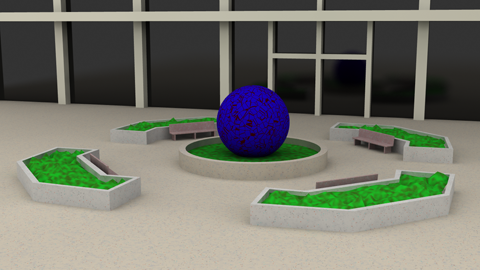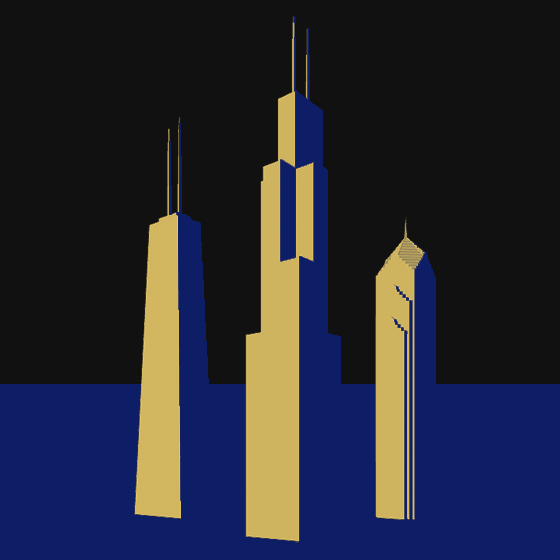Now that I finished recreating the FLCL background using LightWave 3D, I have started working on a second background. This time, I’m using a shot from Cowboy Bebop, my favorite anime. If you haven’t seen the show, get yourself a copy (or wait until it starts airing on Adult Swim again — they have been showing Cowboy Bebop since Adult Swim first started in 2001, because the series is that good).
Category: 3D
3D Anime Background – FLCL
A few weeks ago, I mentioned that I am working on creating anime-style backgrounds within LightWave. I was a little delayed on this side project by a small cold but I finally finished a draft of my first basic scene, which is the main character’s room from FLCL. You can view the reference image either in my original post or directly here.
This draft is as much as I plan on doing for this particular side project. My goal was to create techniques that will aid me in creating better backgrounds for traditional-looking animations, and I accomplished that goal.

Lighting Tests Addendum
PiVisuals asked if I could post the details of my lighting setups from my Outdoor Lighting Tests, so I quickly compiled a quick table of the important settings for each scene.
All scenes have these common settings:
- “Final Gather” radiosity set with 2 indirect bounces.
- One main distant light for the sun (or moon).
3D Anime Backgrounds
I have been working on creating more stylized background renders from LightWave 3D using some techniques of my own design. The goal is to create backgrounds that fit better into traditional Japanese-style animation shows (anime).
I have made good progress but I still have a lot of work to perfect the new techniques. My current goal is to create a reasonable likeness of a background from the show FLCL (one of my favorite anime shows of all time, although it’s a bit surreal and probably nonsensical if you aren’t already interested in the genre). Here is the background I am trying to duplicate in LightWave:
LightWave 3D Outdoor Lighting Tests
Last week I created a basic outdoor scene and created multiple lighting setups for different times of the day (and night). You can see a simple clay render of the scene in my “LightWave 3D Clay Render Tutorial”. Below is a simple radiosity render after I textured the objects.

Using this exact scene, I used different lighting setups to give the feeling of morning, noon, sunset, and night. All scenes use the same textures/surfaces.
Goals for the week
Life has settled down a bit for me and I can focus on my LightWave hobby again. I played around with the software a bit this past week and re-familiarized myself with the modeling and basic layout tools.
One of the main reasons for starting this site is to document and track my goals related to LightWave. Now that I feel comfortable using the software again, I want to start setting some short-term and long-term goals for myself.
In the very short-term, my goals are simple:
- Figure out my long-term goals and deadlines and post them to this site (deadline: Oct 6)
- Evaluate different compositing and non-linear editing (NLE) software to find a pipeline that works best for me (deadline: Oct 6)
I have used Sony Vegas in the past for both compositing and NLE, but it’s been so long that the last version I used was 6.0 (the current version is 12). After doing some initial research, I have found three different products to evaluate:
- Sony Vegas Movie Studio 12 Platinum ($99.95 or $129.95 with Sound Forge)
- Blender 3D (free)
- Lightworks (free or $60 for full codec support)
I am going to evaluate each product separately as a compositor and an editor, which means I may decide to use a different program for each function. However, my goal is to only spend money on one product (which ultimately means that I will not use Vegas as a compositor and Lightworks as an editor, which I believe is the only combination that would force me to pay for two products).
